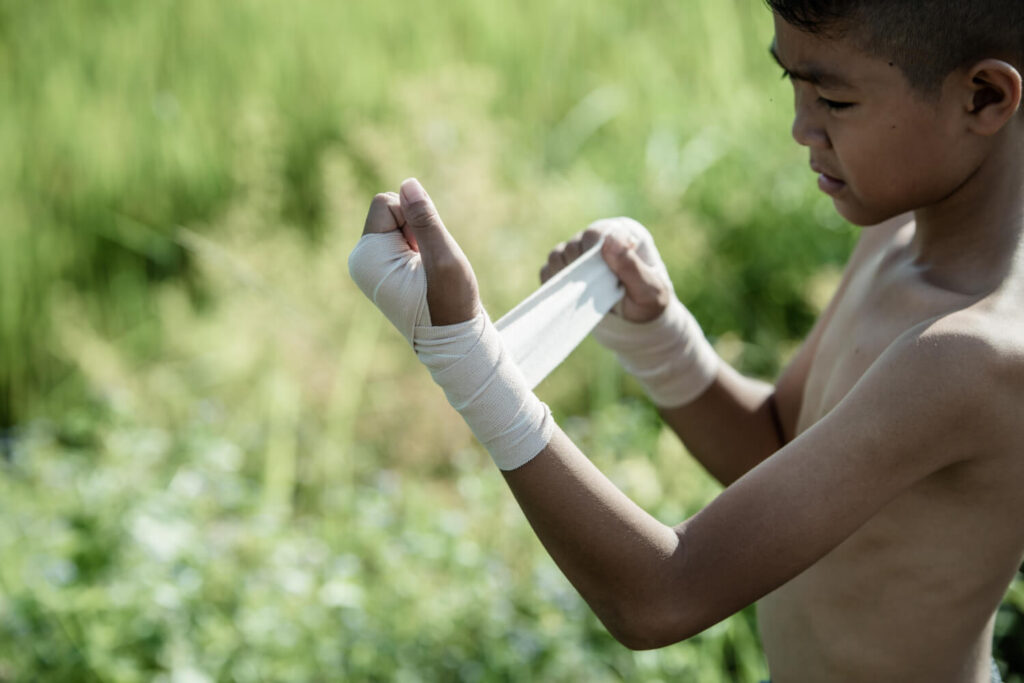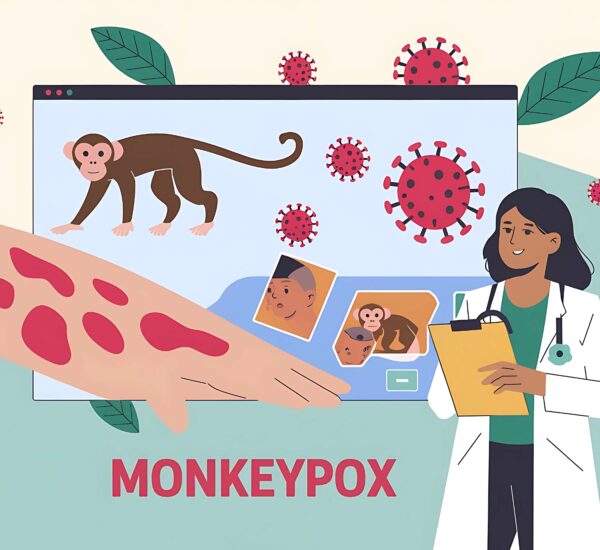Mpox, previously known as monkeypox, poses a growing health concern globally and in the Philippines. In that case, the call for protective measures such as the Mpox vaccine is a must. The most approved Mpox vaccination is the JYNNEOS vaccine, known as MVA-BN. Unfortunately, this vaccine is not yet available in the Philippines. Still, the Philippine Health Department, DOH, and the government promote other preventive measures to protect every community from the Monkeypox virus.
Discover more about the Mpox vaccine, and other protective measures currently in place to prevent the spread of Mpox. Let’s begin!
Understanding Mpox and Its Impact in the Philippines

Mpox is a zoonotic virus that can cause severe illness in humans. It is particularly concerning in the Philippines, due to its return after the global confirmed cases in 2022-2023. Before its global impact, Mpox was endemic to the African countries in West and Central Africa, particularly in the Democratic Republic of the Congo. The first case in 1970 was discovered in that area and continues to occur today.
It is important to note that the virus can cause a range of symptoms, which are primarily transmitted through close contact and sexual contact. In the Philippines, efforts are underway to better understand and contain the spread of Mpox, with a focus on educating the public about the virus and implementing measures to prevent further transmission.
Symptoms of Mpox
- headache
- chills
- sore throat
- swollen lymph nodes
- low energy
- back and muscle aches
- skin rash (spreads on the soles of the feet, palms of the hands, chest, face, anal area, groin, etc.)
Role of Vaccines in Preventing Mpox
As mentioned earlier, the Mpox infection can increase fear among people, especially when skin lesions are involved. That’s why to avoid the risk of infection, preventive measures such as vaccines can help achieve that goal.
Vaccination is a critical tool in managing Mpox outbreaks. It works by injecting a virus sample and training the body to combat its effect. Thus, allowing oneself to be immune from the Mpox virus and control the spread of the virus.
Mpox Vaccine: JYNNEOS or MVA-BN

JYNNEOS is a vaccine made by a biotechnology company known as Bavarian Nordic. It contains the Modified Vaccinia Ankara, a non-replicating, yet live attenuated virus potentially vital for Mpox prevention. At the same time, it can also be considered a smallpox vaccine.
This vaccine was approved by the FDA in 2019, but can initially be used by individuals ages 18 and up. However, during the first global outbreak in 2022, it was approved for usage of patients below 18 years old.
When it comes to this vaccine, it is recommended as a PPV or Primary Preventative Vaccine, which involves 2 doses of the vaccine. The second dose must be given after 4 weeks. Meanwhile, if the individual hasn’t received the doses yet, but there’s a possible risk of exposure due to close physical contact, then this vaccine can be considered as Post-exposure Preventative Vaccination (PEPV). Individuals must receive the vaccine within 4 – 14 days of last exposure.
Common Side Effects of the JYNNEOS Vaccine
While the JYNNEOS or MVA-BN vaccine is a designated disease control vaccine, it can still affect people’s health through the following side effects. However, it is important to understand that these side effects are normal as they signify how the immune system interacts with the injected virus.
Adverse reactions from the JYNNEOS vaccine can include the following:
- nausea
- headache
- muscle aches
- tiredness or low energy
- pain, swelling, and redness at the injection site
Remember that these side effects are common and considered as mild. However, if these persist together with severe allergic reactions, a visit with a healthcare provider is a must.
Why Do the Philippines Not Have an Available Mpox Vaccine?
In August, several confirmed cases of Mpox were reported, which resulted in constant fear of skin contact, intimate contact, and other forms of transmission with other people. That’s why most individuals seek protection, which the Mpox vaccine will supposedly provide. Unfortunately, the Mpox vaccine or JYNNEOS vaccine is not available in the Philippines.
However, before the end of August, the DOH mentioned that they had requested 2000 doses of the vaccine. Furthermore, despite the high risk of contracting the disease, DOH remained clear about the other initiatives they are implementing to protect people from the virus despite the lack of vaccines.
The Department of Health still uses the guidelines created in 2022 for managing and controlling the Mpox virus. According to them, this guideline still works, which can be proved by the low number of confirmed cases.
Preventive Measures Beyond Mpox Vaccination

While vaccines are vital, additional preventive measures are essential to curb the spread of Mpox. This section provides a detailed look at these strategies. Let’s uncover some of the preventive measures proposed by the DOH:
A. Self-protection
For the self-protection aspect, people who are considered at higher risk of contracting the disease can practice these care tips:
- wear masks to prevent inhalation of respiratory particles
- wash of hands with water and soap
- use rubbing alcohol to disinfect hands
- avoid skin-to-skin contact, sexual activities, and other forms of close contact with people who developed symptoms of Mpox
B. Contacting A Healthcare Provider
In this case, when the individual develops a Mpox rash with the other symptoms of Mpox, this calls for a consultation with a doctor. Risk assessment and other diagnostic tests will be requested by the doctor to confirm the presence of the Mpox virus.
C. Isolation
Once the test result confirms the presence of the virus, the patient must follow the doctor’s recommendations. Commonly, patients with Mpox are required to isolate for at least 21 days or more. If the patient does not require hospitalization and will be isolated at home, then it is important to have a separate room away from the other family members.
D. Avoiding Skin Manipulations
During the isolation, it is normal to feel the intense willingness to scratch the Mpox rashes, but shouldn’t happen. The blisters or skin lesions are painful if the person pops them through scratching, resulting in unbearable pain. That’s why patients are recommended to wear gloves and to cover up the skin by wearing long sleeves, gauze, and more for cover-up.
E. Disinfect Household Items
Another preventive measure is to ensure that the house is virus-free to avoid increasing the number of patients with Mpox at home. It’s best not to share utensils, plates, cups, and more to prevent transmission through infected saliva. At the same time, doing laundry to kill the virus can help prevent future Mpox infections in the house.
There are more initiatives that the DOH aims to lessen areas with a high risk of Mpox situation. Through this guideline, people can be safe and prevent the spread of the virus.
Frequently Asked Questions
When will the Mpox vaccine be available in the Philippines?
At this point, the Mpox vaccine request is still ongoing for approval for the Philippines’ usage. The Department of Health is closely monitoring its development and will provide updates on its availability. In the meantime, following preventive measures such as isolation, avoiding skin manipulations, and disinfecting household items remain crucial in controlling the spread of Mpox.
Aside from JYNNEOS or MVA-BN, are there other Mpox vaccines available in the market?
Yes, there’s a Mpox vaccine called the ACAM2000 vaccine. It is also a same type of replicating vaccine, for Mpox and smallpox vaccination. Unfortunately, this vaccine can provide more adverse events to patients, especially those with weak immune systems.
Where will the Mpox vaccine be administered?
Since there’s no Mpox vaccine available yet, it can be difficult to identify where to go for the immunization. It’s best to wait for the announcement of the DOH to know if the vaccine is ready and if it can be accessed by everyone.
Conclusion
While the Mpox vaccine is important, it seems that the Philippines is successful in managing Mpox. Preventing Mpox requires a combined effort of awareness from the public and effective health guidelines for protection. In short, strong preventive measures can make a huge difference, especially if followed by many people.
In that case, if you might need assistance with Mpox, don’t hesitate to seek consultation with a trusted doctor. Book an online consultation with an infectious disease doctor today!



